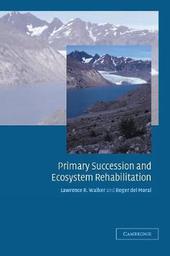
|
Primary Succession and Ecosystem Rehabilitation
Paperback / softback
Main Details
Description
Natural disturbances such as lava flows, landslides and glacial moraines, and human-damaged sites such as pavement, road edges and mine wastes often leave little or no soil or biological legacy. This book provides the first comprehensive summary of how plant, animal and microbial communities develop under the harsh conditions following such dramatic disturbances. The authors examine the basic principles that determine ecosystem development and apply the general rules to the urgent practical need for promoting the reclamation of damaged lands. Written for ecologists concerned with disturbance, landscape dynamics, restoration, life histories, invasions, modeling, soil formation and community or population dynamics, this book will also serve as an authoritative text for graduate students and a valuable reference for professionals involved in land management.
Author Biography
Lawrence Walker is a Professor of Biology at the University of Nevada, Las Vegas. Roger del Moral is a Professor of Botany at the University of Washington, Seattle.
Reviews'Walker and del Moral have done a superb job of summarizing current understanding of succession ...' Bioscience 'The wide coverage ... will ensure it a place in undergraduate reading lists as well as on the shelves of more advanced students, environmental consultants and researchers.' Bulletin of the British Ecological Society 'The book is nicely produced, well written, interesting and informative.' Journal of Biogeography 'With respect to the background of both the authors, terrestrial ecologists highly respected within their thematical spheres, this book represents a reliable and extremely useful handbook for the majority of ecologists of these days. It surpasses the sphere of science and is useful to practically oriented groups of a wide background ...'. Journal Folia Geobotanica ' ... a comprehensive and facinating overview on theories and impications of primary succession and community of development. The book is an inspiration for disturbance, vegetation and landscape ecologists as well as thoseinvolved in restoration and ecosystem management. This book can read like a profound review, summarizing current knowledge from the pioneer works to very recent findings and including short summaries at the end of most chapters.' Phytocoenlogica
|